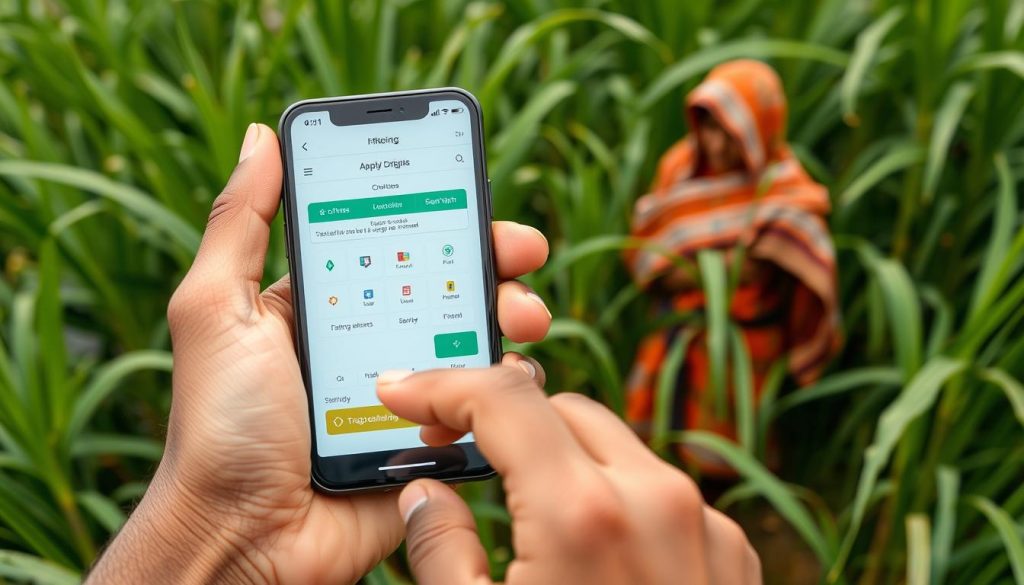The software industry can make a big impact in emerging markets. These regions offer new audiences and drive innovation. Promoting software here needs a smart approach.
Developing countries present untapped potential for software providers. They offer chances to foster economic growth. However, these markets are diverse and complex.
This guide explores strategies for promoting software in developing countries. We’ll cover understanding local markets and tailoring marketing approaches. We’ll also discuss leveraging affordable channels and building partnerships.
Customer support and compliance are crucial too. These elements help software businesses thrive in high-potential markets.
Key Takeaways
- Understand the unique cultural and technological landscape of developing markets to effectively position your software offerings.
- Adapt your marketing strategies and content to local preferences and communication channels for maximum impact.
- Leverage cost-effective digital and community-based platforms to reach your target audience in developing countries.
- Forge strategic partnerships with local influencers, resellers, and industry associations to expand your software’s reach and credibility.
- Prioritize customer support, training, and compliance to build trust and ensure long-term success in developing markets.
Understand the Local Market Dynamics
Promoting software in developing countries requires understanding local market dynamics. Analyze cultural factors, technological landscapes, and consumer preferences. These elements define each target region’s unique characteristics.
Cultural Nuances and Preferences
Successful software promotion hinges on grasping local culture. This includes language, customs, and consumer engagement with technology. Tailoring your approach to these nuances builds trust with your audience.
Technological Infrastructure and Accessibility
Assess technological infrastructure and accessibility challenges in developing markets. Evaluate internet connectivity, mobile device prevalence, and users’ technical literacy. Adapt your software and marketing strategies to these realities.
| Key Considerations for Local Market Analysis | Developing Countries | Developed Countries |
|---|---|---|
| Cultural Factors | Language, customs, consumer preferences | Diverse cultural norms, global influences |
| Technological Landscape | Limited internet access, mobile-first approach | Advanced infrastructure, multi-device usage |
| Market Dynamics | Emerging, price-sensitive, growth potential | Mature, competitive, established customer base |
Understanding local market dynamics helps software companies tailor their strategies effectively. This approach enables them to reach and engage target audiences in developing countries. It ultimately drives sustainable growth and success.
Tailor Your Marketing Strategies
Marketing software in developing countries demands a unique approach. You must consider local market characteristics. Localizing content is crucial to connect with your audience.
Localize Your Content and Messaging
Content localization adapts your message to fit cultural preferences. This includes translating into local languages and using appropriate imagery.
Incorporate local references to make your message relatable. Address specific needs relevant to the local context.
Tailoring your marketing strategies creates targeted messaging. This resonates with your audience and boosts software adoption chances.
“The key to effective localized marketing is to understand and embrace the unique cultural, technological, and economic factors that shape the local market.” – Marketing Expert, Samantha Jones

Localization efforts strengthen connections with your target audience. They drive meaningful engagement with your software solutions.
Leverage Affordable Marketing Channels
Promoting software in developing countries requires cost-effective marketing channels. Traditional advertising may not work due to budget limits and infrastructure issues. Savvy vendors should explore emerging channels for impressive results.
Social media is a powerful, budget-friendly marketing tool. Facebook, Instagram, and WhatsApp are widely used in developing regions. These platforms help engage your target audience effectively.
Organic content, targeted ads, and influencer partnerships can reach potential customers affordably. These strategies maximize your marketing budget and connect with the right audience.
Digital advertising is another valuable channel to consider. Google Ads, Facebook Ads, and local classifieds offer targeted, affordable options. These platforms cater to businesses in developing countries.
Carefully craft your ad campaigns and optimize targeting. This approach helps you make the most of your budget and reach ideal customers.
| Marketing Channel | Advantages | Considerations |
|---|---|---|
| Social Media |
|
|
| Digital Advertising |
|
|
Use these affordable channels to promote your software effectively. Tailor your strategies to developing markets’ unique needs. This approach helps you reach target customers without overspending.
Build Local Partnerships and Collaborations
Strategic local partnerships can revolutionize software promotion in developing countries. Collaborate with trusted distributors, technology partners, and industry influencers. They can help navigate the market and reach your target audience effectively.
Identify Key Influencers and Brand Advocates
Local influencers and brand advocates can boost your software’s visibility and credibility. These individuals often have strong followings. They can authentically promote your product to their communities.
Here’s how to build successful local partnerships:
- Research and identify reputable local companies, organizations, or individuals who align with your brand and have a strong presence in the market.
- Establish mutually beneficial agreements to co-market, distribute, or provide technical support for your software.
- Collaborate with local influencers and brand advocates to create content, host events, or engage with their audience.
- Foster long-term relationships and continue to support your local partners to maintain a strong presence in the market.
Local partnerships and industry collaborations can be powerful tools. They leverage expertise, networks, and credibility. This approach helps promote your software effectively in developing countries.

Offer Flexible Pricing and Payment Options
Flexible pricing is key for promoting software in developing countries. These markets have unique economic landscapes. Software providers must adapt to local preferences and financial capabilities.
Implement localized pricing structures like tiered or pay-as-you-go models. This lets customers access software at affordable prices. It increases payment flexibility and overall accessibility.
Consider alternative payment options common in developing countries. These include mobile money, digital wallets, and cash-on-delivery solutions. Such options enhance accessibility and support localized pricing strategies.
Diverse payment flexibility options make software accessible to a wider audience. This drives greater adoption in developing countries. It also boosts success in these emerging markets.
“Flexible pricing and payment options are crucial for software success in developing markets. By catering to local financial realities, you can unlock vast opportunities for growth and adoption.”
How To Promote Software In Developing Countries
Promoting software in developing countries needs a smart and flexible approach. Understanding local markets and using affordable methods can help reach new customers. Tailoring strategies to fit each region is key to success.
It’s vital to grasp the culture and tech setup of your target area. Adjust your message to match local tastes. This builds trust and gets more people to use your software.
Find influential people and team up with local businesses. This can make your software more visible and trusted. Offer different prices and payment choices to fit various economic situations.
| Strategy | Benefit |
|---|---|
| Localize content and messaging | Enhance relevance and resonance with the local audience |
| Leverage affordable marketing channels | Maximize reach and impact with limited resources |
| Build local partnerships and collaborations | Leverage existing networks and established trust |
| Offer flexible pricing and payment options | Increase affordability and accessibility for the target market |
Using these software promotion strategies in developing countries and emerging markets can lead to great results. Companies can overcome challenges and tap into the huge potential of these growing regions.
“The key to success in developing markets is to think globally but act locally.”

Prioritize Customer Support and Education
Software developers in developing countries must focus on customer support and user education. Exceptional support and training resources boost user engagement. This approach ensures long-term satisfaction and drives increased software adoption.
Provide Training and Resources
Multilingual and localized support is vital for diverse customer needs. User-friendly training materials help people navigate your software solutions effectively. These resources can include tutorials, video demos, and comprehensive FAQs.
- Offer multilingual and localized customer support
- Develop comprehensive training materials and resources
- Provide step-by-step tutorials and video demonstrations
- Maintain a detailed FAQ section to address common questions
Focusing on customer support and user education creates a positive user experience. This approach builds loyalty, even in challenging developing countries. Investing in training resources will lead to widespread software adoption and usage.
“Providing exceptional customer support and educational resources is the foundation for driving software adoption in developing countries.”
Embrace a Mobile-First Approach
Mobile-first strategy is crucial for promoting software in developing countries. Smartphones are becoming more common, making it vital to optimize products for these devices. User experiences must be seamless on mobile platforms.
Focusing on mobile accessibility caters to user preferences in these markets. It ensures your software reaches a wider audience effectively.
Optimize for Mobile Devices
Mobile optimization involves several key aspects. These include responsive design, fast load times, and user-friendly interfaces.
Mobile-specific features can enhance user experience. Utilize touch gestures, camera integration, and location-based services to maximize engagement.
- Designing responsive and mobile-optimized user interfaces that provide a smooth and intuitive experience across various screen sizes and device types.
- Prioritizing page load times and streamlining your website or application’s performance for fast and efficient access on mobile networks.
- Incorporating features and functionalities that leverage the unique capabilities of mobile devices, such as touch gestures, camera integration, and location-based services.
A mobile-first strategy improves product accessibility and usability. It helps you connect with your target audience in developing countries more effectively. Mobile optimization is key to success in these markets.
“The future of software is mobile, and those who fail to adapt will be left behind.”

| Key Considerations for Mobile-First Software | Best Practices |
|---|---|
| User Interface Design | Responsive, touch-friendly layouts that scale seamlessly across devices |
| Performance Optimization | Rapid page load times, efficient data usage, and smooth interaction |
| Mobile-Specific Features | Leveraging camera, GPS, and other device capabilities |
| Localization and Accessibility | Adapting content, language, and functionality to local market needs |
Comply with Local Regulations and Standards
Software providers must navigate local regulations when expanding into developing countries. Regulatory compliance is key to avoiding legal issues and building customer trust. This approach is vital for success in new markets.
Consider these guidelines to align your software with each target market’s requirements:
- Obtain necessary licenses and permits: Research local licensing requirements for your software operations. Follow all relevant software regulations to operate legally in the area.
- Adhere to data privacy laws: Understand data protection laws in the countries you serve. Implement strong security measures to protect customer information.
- Align with industry-specific guidelines: Learn about local industry regulations for your software. Adjust your product and marketing to meet these standards.
Prioritizing regulatory compliance helps software companies navigate complex legal landscapes. This approach builds credibility in developing countries.
It also gives customers confidence to adopt and trust your solutions. Success in new markets often hinges on meeting local standards.
“Compliance with local regulations is not just a legal requirement, but a strategic imperative for software providers seeking to succeed in developing markets.”
Conclusion
Promoting software in developing countries needs a smart, flexible approach. Understanding local markets and tailoring strategies is crucial. Affordable channels and local partnerships can boost your software’s appeal and reach.
A mobile-first mindset is essential in these markets. Offer flexible pricing and payment options. This approach drives growth and helps overcome unique challenges.
Focus on meeting local needs and providing great customer experiences. This strategy positions your software for long-term success. Stay adaptable and deliver exceptional value to thrive in these dynamic markets.




